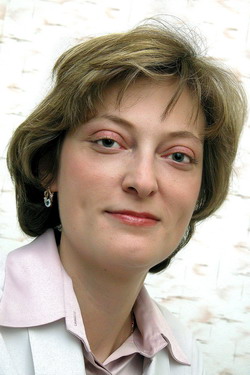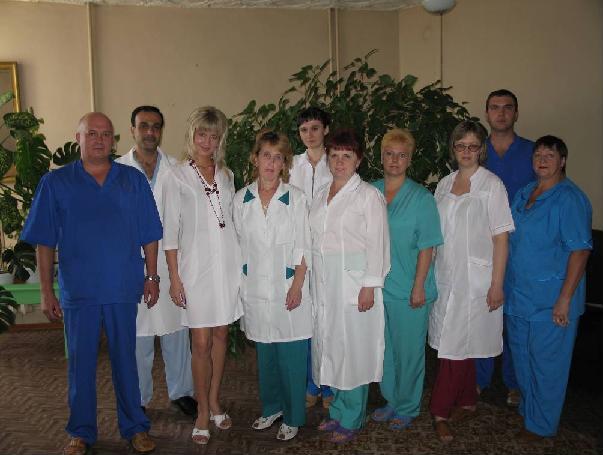 |
Head of the Unit
Polyanskaya Natalya Konstantinovna
Doctor of Medical Science,
Doctor of higher qualification category
|

Doctors::
Abramov Edward Victorovich, doctor of 1st qualification category.
Fursova Natalya Yuryevna, ophthalmologist.
Kaperskaya Anna Vladimirovna, ophthalmologist.
Shatalov Mikhail Mikhaylovich, ophthalmologist.
The unit’s priority guideline is treatment of following kinds of eye pathologies:
Phacoemulsification of cataract at any stage of its development – at that the blurred lens
is extracted through the small incision using the 5th generation phacoemulsificator
Nidek CV 24000 AP, intraocular lenses of different manufacturers are
implanted providing the operated eye good resolution and effective protection from damaging UV (ultraviolet) action.

In the unit they perform the following kinds of medical work:
In-patient medical care and out-patient-ambulatory care of adult population.
Surgical treatment :
All operations are performed using microscope, on the highest quality up-to-date level.
- cornea diseases.
- lens diseases.
- traumas.
- retina diseases.
- myopia.
- appendages of eye diseases.
- neoplasms.
In the unit they perform the following operations :
- On account of cataract :
- extracapsular extraction of cataract.
- extracapsular extraction of cataract with intraocular lenses implantation.
- intracapsular extraction of cataract.
- extraction of the lens from the anterior chamber of eye.
- dissection of the secondary cataract.
- extraction of traumatical cataract.
- extracapsular extraction of cataract coupled with the antiglaucomatous operation.
- phacoemulsification of cataract.
For implantation they use IOL of various modifications by leading world-famed manufacturers.
- On account of retinal detachment :
- circlage,
- stopping of sclera with the silicon wisp,
- lamellar scleral resection,
- surgical diathermy,
- laser-coagulation.
- On account of strabismus :
- recession,
- muscle resection.
- In myopia (as prophylaxis of myopia progress) :
- meridional,
- tunnel scleroplasty,
- refractive operations (keratotomy).
- Transplantation of cornea on account of corneal leukoma and dystrophy :
- lamellar,
- subtotal,
- total.
- Operations on account of both benign and malignant neoplasms (various operations depending on localization).
- Operations on eyelids.
- Operations on account of traumatic eye injuries :
- primary surgical d-bridement (PSD) of corneoscleral injuries,
- diascleral extraction of foreign bodies from the eyes,
- extraction of foreign bodies from the lens, anterior chamber of the eye, deep cornea layers,
- enucleation of eye including the stump forming,
- (PSD) of appendages of eye injuries.
- Operations on account of the vitreous body pathology :
- anterior and posterior vitrectomy.
Before the operation the patients are examined by anesthetists for coming to a determination regarding the kind of anesthesia choice; besides they have
consultations of therapeutist and neurologist if there is a necessity.
In the unit they use the following diagnostic techniques:
- direct and backward ophthalmoscopy;
- skiascopy;
- biomicroscopy;
- perimetry;
- exoophthalmometry;
- echography;
- echobiometrics;
- diaphanoscopy;
- tonometry;
- gonioscopy;
- color sense test.
The following manipulations are performed:
- parabulbar and retrobulbar introduction of drug under conjunctiva;
- intravenous drop and stream infusions;
- intramuscular, subcutaneous injections;
- irrigation of lacrimal passages;
- paravasal blocade;
- drops instillation, putting ointments;
- local micro-cauterization of cornea;
- scraping from eyelids conjunctiva.
In the unit the following paid services are available:
- In-patient treatment of profile patients having no insurance policies or with the usage of recent technologies.
- Consultative reception of patients.
- All above-listed diagnostic techniques and manipulations.
- Outpatient surgery.
- Providing beds for relatives of seriously ill (infirm) patients (by agreement) or a separate ward (if there are any available).
Relatives must have the results of chest fluorography on them.